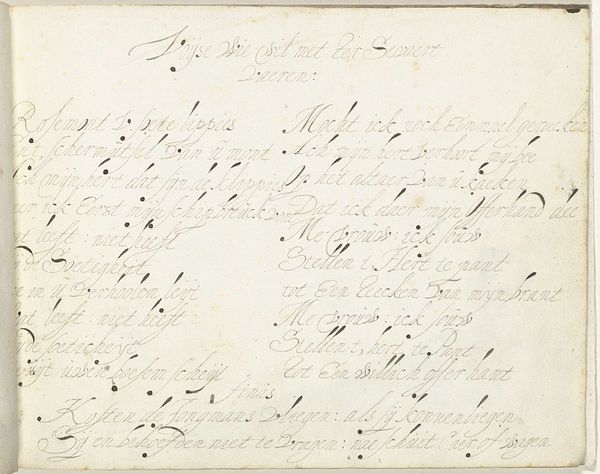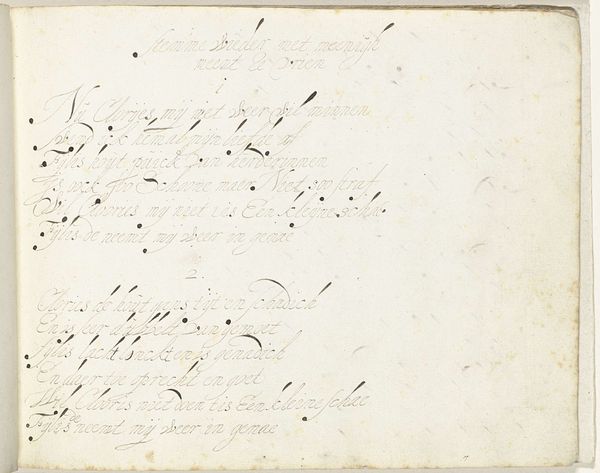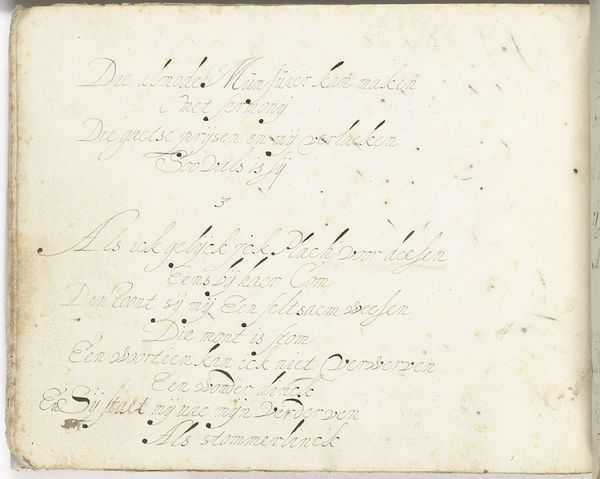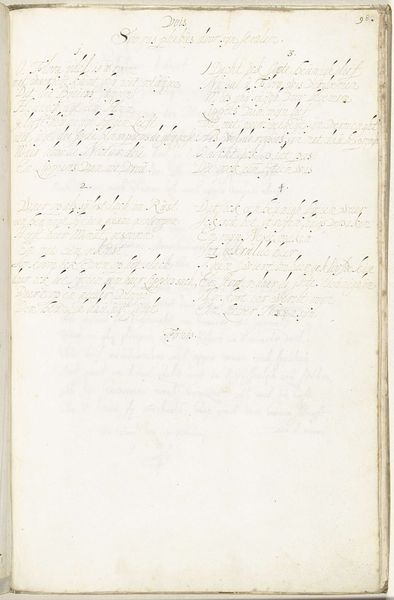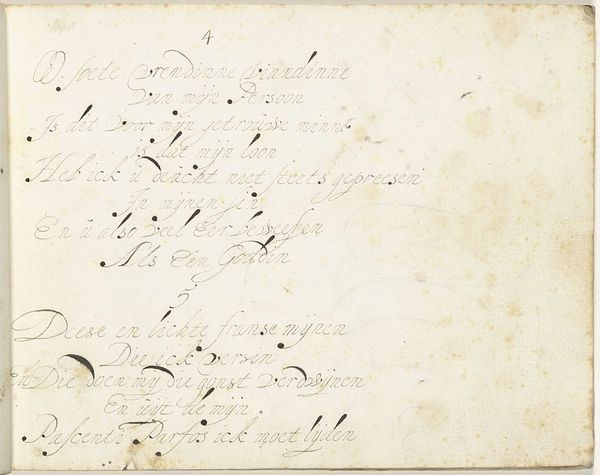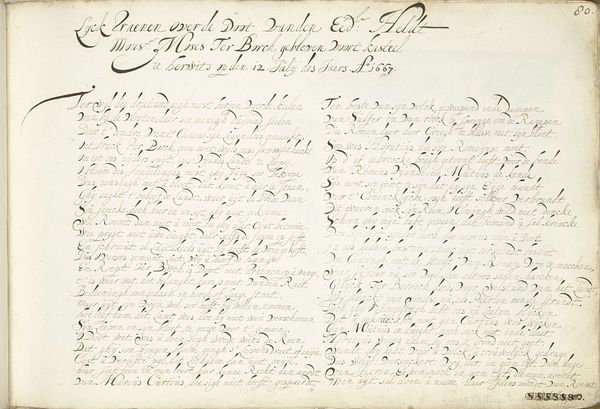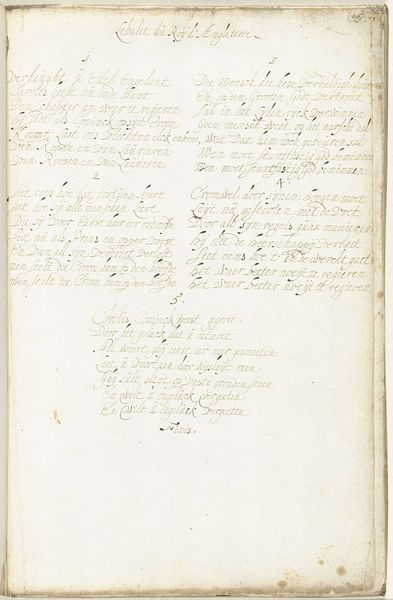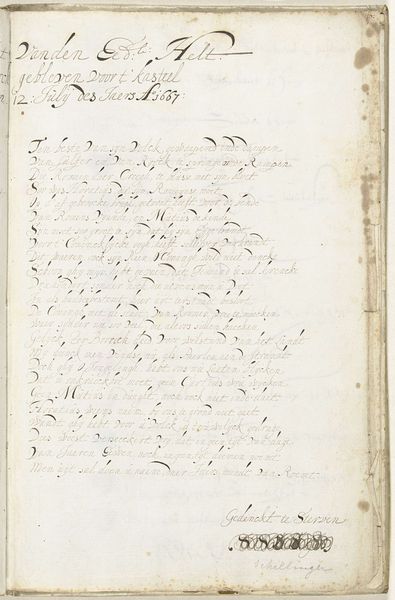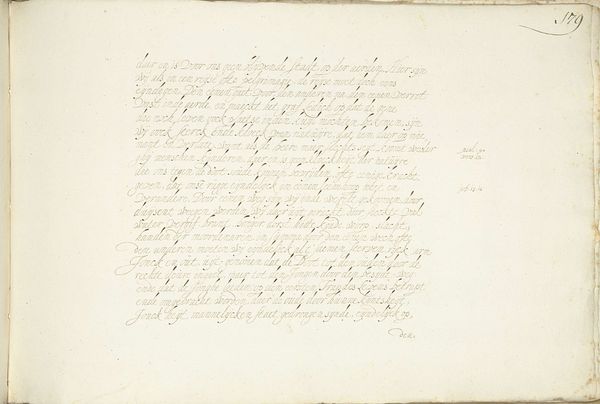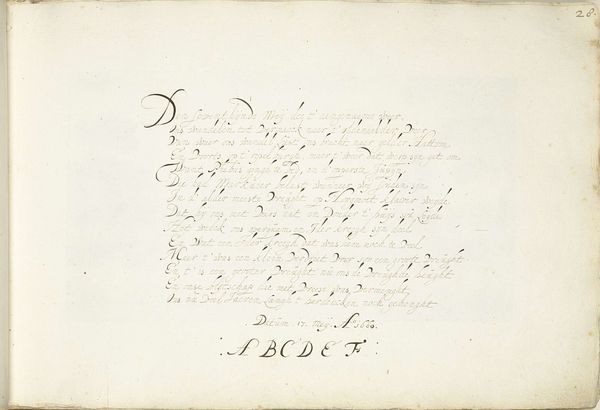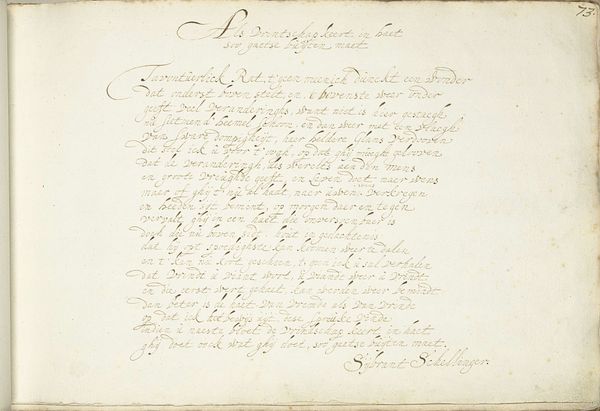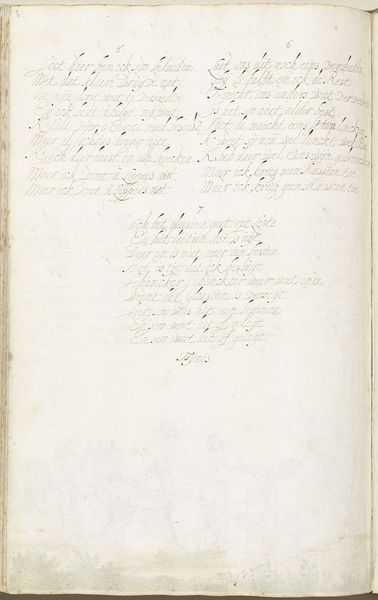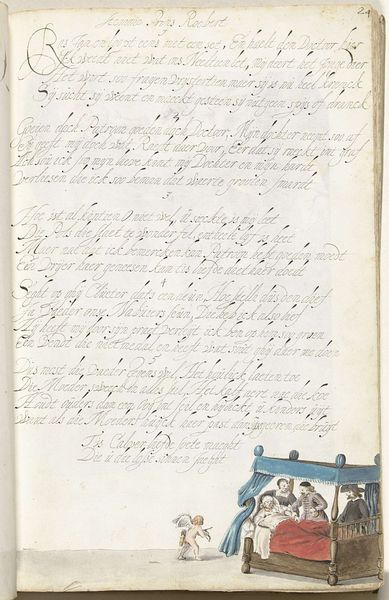
drawing, paper, ink, pen
#
drawing
#
aged paper
#
hand written
#
hand-lettering
#
dutch-golden-age
#
hand drawn type
#
hand lettering
#
paper
#
personal sketchbook
#
ink
#
hand-written
#
hand-drawn typeface
#
fading type
#
pen
#
sketchbook art
Dimensions: height 155 mm, width 211 mm
Copyright: Rijks Museum: Open Domain
Curator: Today we're looking at "Gedicht met daaronder twee aforismen," a work on paper with ink by Gesina ter Borch, created circa 1646 to 1650. It’s held in the Rijksmuseum collection. What's your initial take? Editor: It feels incredibly intimate, like stumbling upon a private journal entry. The aged paper and delicate script give it a sense of fragility and immediacy. Almost like reading someone's deepest reflections. Curator: Ter Borch was known for her meticulous detail, not just in painting, but also in her handwriting and personal sketches. There's a rhythm here. Notice how the flourishing script seems to dance across the page, drawing attention to certain words and phrases? Editor: Yes, the calligraphic style really emphasizes the visual poetry. It seems she's exploring aphorisms—pithy observations on life. But what does it mean to find these words encased in such ornamental script? Does this emphasize a sense of class and societal standards around her poetry? Curator: Aphorisms, particularly in the 17th century, carried a great deal of weight. They reflected a cultural interest in distilling wisdom, presenting moral and philosophical truths in concise, memorable forms. They were a form of currency, passed amongst the elite as conversational touchstones, even memorized to prove literacy, wisdom, and cultural acuity. Editor: This raises a vital question: Whose wisdom? Often, these 'universal' truths reinforce dominant power structures. Are these aphorisms simply repeating societal expectations for women, for example? Or does she subtly subvert them? How can we reclaim these fragmented works? Curator: It is definitely worth analyzing these particular phrases in the work in their own right. I feel the artist may be giving voice to a more inward, meditative experience through these phrases... she might be grappling with faith, love, death, and the nature of human existence. These are core human experiences. Editor: Absolutely, and recognizing that is crucial. This tiny, private artwork provides a tangible entry point into a very different historical consciousness. It challenges our preconceptions and offers glimpses of women’s selfhood during this time. Curator: I agree. Gesina ter Borch presents to us here something deeply reflective and insightful, beyond a historical marker but almost a timeless statement of personal experience. Editor: It makes us ponder her unique place in history, how she carefully recorded these personal words to be remembered and felt.
Comments
No comments
Be the first to comment and join the conversation on the ultimate creative platform.
